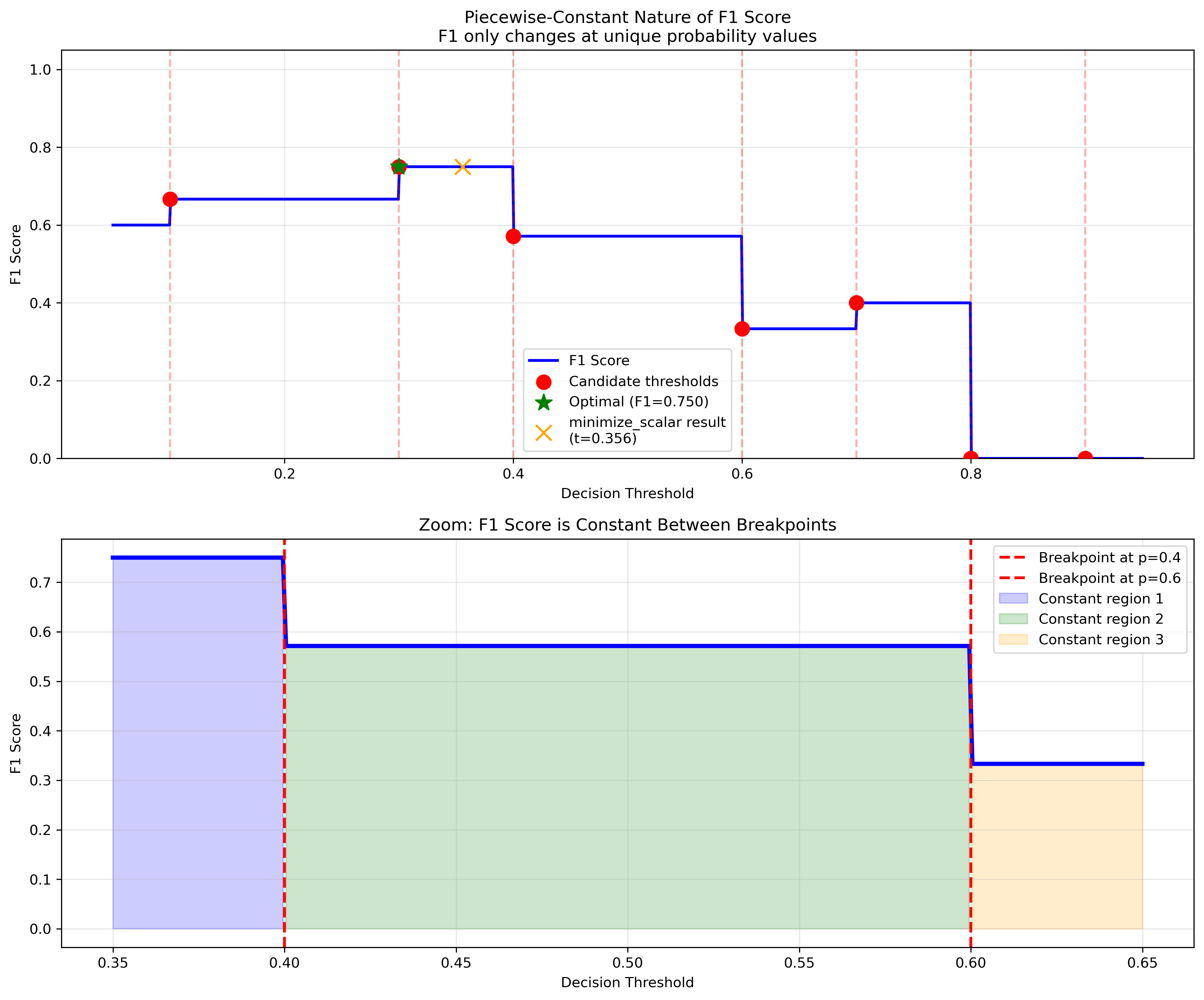Optimal Classification Cutoffs¶
A Python library for computing optimal classification thresholds for binary and multiclass classification problems.
Key Features:
🚀 Fast O(n log n) algorithms for exact threshold optimization
📊 Multiple metrics - F1, accuracy, precision, recall, and custom metrics
💰 Cost-sensitive optimization with utility-based thresholds
🎯 Multiclass support with One-vs-Rest and coordinate ascent strategies
🔬 Cross-validation utilities for robust threshold estimation
🛠️ Scikit-learn compatible API for seamless integration
⚡ Auto method selection - intelligent algorithm choice for best performance
Getting Started
User Guide
API Reference
Theory & Background
Additional Resources
Why Optimize Classification Thresholds?¶
Most classifiers use a default threshold of 0.5, but this is often suboptimal for:
- 🏥 Medical Diagnosis
False negatives (missed diseases) cost far more than false positives
- 🏦 Fraud Detection
Missing fraud has higher cost than investigating legitimate transactions
- 📧 Spam Detection
Blocking legitimate emails is worse than letting some spam through
- 📊 Imbalanced Datasets
Default thresholds perform poorly when classes have very different frequencies
The Problem with Standard Optimization¶
Classification metrics like F1 score are piecewise-constant functions that create challenges for traditional optimization methods:

Standard optimizers fail because these functions have:
Zero gradients everywhere except at breakpoints
Flat regions providing no directional information
Step discontinuities that trap optimizers
Our solution uses specialized algorithms designed for piecewise-constant optimization.
Quick Example¶
from optimal_cutoffs import get_optimal_threshold
import numpy as np
from sklearn.ensemble import RandomForestClassifier
from sklearn.model_selection import train_test_split
from sklearn.datasets import make_classification
# Generate imbalanced dataset
X, y = make_classification(n_samples=1000, weights=[0.9, 0.1], random_state=42)
X_train, X_test, y_train, y_test = train_test_split(X, y, test_size=0.3)
# Train classifier
clf = RandomForestClassifier().fit(X_train, y_train)
y_prob = clf.predict_proba(X_test)[:, 1]
# Find optimal threshold (automatic algorithm selection)
threshold = get_optimal_threshold(y_test, y_prob, metric='f1')
print(f"Optimal F1 threshold: {threshold:.3f}")
# Compare with default 0.5 threshold
default_pred = (y_prob >= 0.5).astype(int)
optimal_pred = (y_prob >= threshold).astype(int)
from sklearn.metrics import f1_score
print(f"Default F1: {f1_score(y_test, default_pred):.3f}")
print(f"Optimal F1: {f1_score(y_test, optimal_pred):.3f}")
Performance Comparison¶
The library’s specialized algorithms significantly outperform standard optimization:
✅ sort_scan: O(n log n) exact algorithm for piecewise metrics ✅ smart_brute: Evaluates only unique probability values ⚠️ minimize: Standard scipy optimization (often suboptimal)
Citation¶
If you use this library in academic research, please cite:
@software{optimal_classification_cutoffs,
author = {Laohaprapanon, Suriyan and Sood, Gaurav},
title = {Optimal Classification Cutoffs: Fast algorithms for threshold optimization},
url = {https://github.com/finite-sample/optimal-classification-cutoffs},
year = {2024}
}